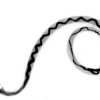Sleep it off: What you can and can’t learn from sleep tracking wearables
Fitness trackers didn't always monitor sleep, but the feature is now a sought-after staple in most devices, as sleep is just as important as exercise to a healthy lifestyle. Most wristbands monitor sleep now, and there are even specialized devices that go on your head or bedside table that can also keep track of how long and how well you sleep each night.
But sleep tracking isn't as simple as step tracking, and you need more than a simple accelerometer to measure it accurately. While motion is an indicator, it's not the only metric you should track to get a full picture of how well you slept.
Understanding how well you slept on any given night depends on your time in light, deep, and REM sleep. Light sleep occurs soon after you fall asleep and your heart rate and body temperature go down. Your body falls into deep sleep typically after 10 to 15 minutes of light sleep, and this is when the body repairs itself from the day before. You'll spend most of your night in light and deep sleep, as REM sleep periods tend to be shorter.










































































